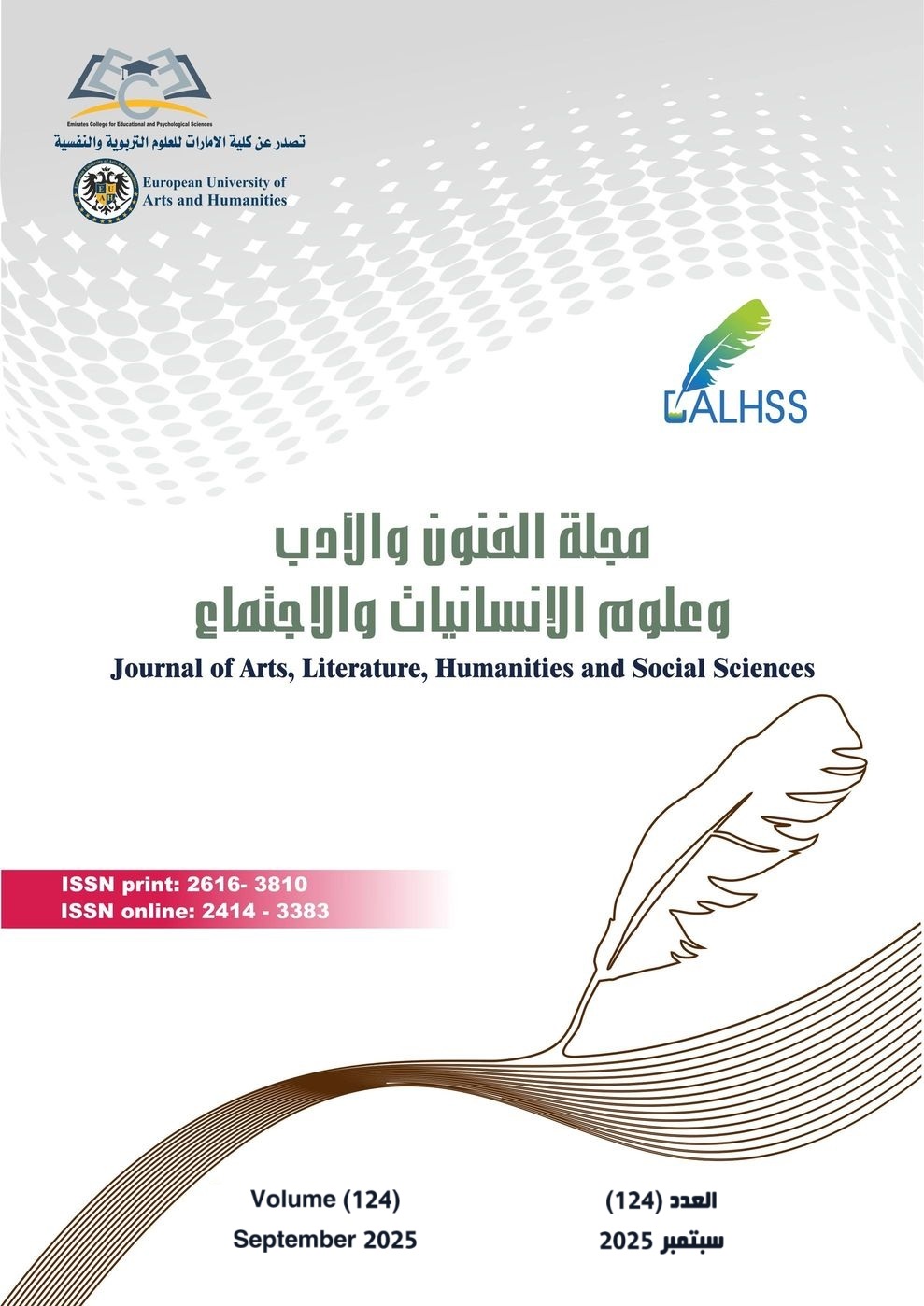اللامألوفية في المعارض الفنية المعاصرة
(تخيل بيكاسو أنموذجاً)
الملخص
المعرض الفني المعاصر لم يعد مقتصراً على الجدران والقاعات التقليدية، بل أصبح فضاءً متجدداً يوظف فيه التقنية والتجريب؛ ليُقدم للزائر تجربة حسية متكاملة تُحاكي المشاعر وتكسر التوقعات. فجاءت هذه الدراسة الحالية بعنوان: "اللامألوفية في المعارض الفنية المعاصرة: "تخيل بيكاسو" أنموذجاً"، التي تهدف إلى التعرُّف على اللامألوفية في المعرض الفني المعاصر "تخيل بيكاسو". ولتحقيق ذلك، تم استخدام المنهج الوصفي التحليلي لما يمتاز به من طرق وأساليب تتناسب مع الدراسة الحالية من خلال تناول الإطار النظري، الذي يشمل على دراسة المعارض الفنية المعاصرة، ومعرض "تخيل بيكاسو"، بالإضافة إلى إلقاء الضوء على اللامألوفية في المعارض الفنية المعاصرة بدراسة معرض "تخيل بيكاسو" أنموذجاً، وذلك بمراجعة العديد من أدبيات الدراسة المتعلقة بموضوع الدراسة الحالية. حيث أظهرت العديد من النتائج، وهي بأنه تتبنى المعارض الفنية المعاصرة مفهوم "اللامألوفية" الذي يهدف إلى تقديم تجارب فنية غير تقليدية. كما عززت التقنيات الحديثة كالصوت والإسقاطات الضوئية من حيوية الأعمال الفنية وواقعية شخصياتها المرسومة. وتُعيد المعارض الفنية المعاصرة تشكيل العلاقة التفاعلية بين الزائر والعمل الفني باستخدام التقنيات التكنولوجية المتنوعة. وأيضاً ساعدت استراتيجية "اللامألوفية" في المعارض الفنية المعاصرة كما في معرض "تخيل بيكاسو"، على إعادة قراءة أعمال الفنان بطريقة مبتكرة تتجاوز الأسلوب التقليدي الصامت. وتوصلت الدراسة إلى عدة توصيات وهي إجراء المزيد من الدراسات، والأبحاث المتخصصة في مجال المعارض الفنية المعاصرة؛ بهدف تسليط الضوء على دورها المحوري في تطوير أساليب العرض الفني وتجديدها. وتشجيع الاهتمام بتوظيف التقنيات الحديثة في المعارض الفنية المعاصرة؛ لابتكار تجارب فنية فريدة وغير تقليدية تكسر جمود الأساليب المألوفة، وتُضفي حيوية على الأعمال الفنية. بالإضافة إلى تطوير المعارض الفنية التفاعلية كأداة لنشر الثقافة البصرية، عبر ربط الفن بالجمهور.
المراجع
2. حسنين، سمير فاروق. (2013، أبريل). المعرض الافتراضي كقاعدة معرفية ونظام اتصال ودوره كمنظور جديد للتذوق. المؤتمر الدولي الرابع الفنون والتربية في الألفية الثالثة. كلية التربية الفنية، جامعة حلوان.
3. سليمان، سامر. (2022). أنواع المعارض الفنية. تم استرجاعه في 22/8/2025. على الرابط: https://n9.cl/mv2pp
4. شواش، سارة حسن. (2025). متاحف ومعارض. تم استرجاعه في 20/8/2025. على الرابط: https://n9.cl/4ouqz
5. العمري، سارة. (2024). <<بيز.. بيز>>: تجربةٌ فنية فريدة تُحيي إبداعات بيكاسو في الرياض. تم استرجاعه في 20/8/2025. على الرابط: https://n9.cl/db9oa
6. الغزالي، حسن هادي. (2023). جدلية المألوف واللامألوف في التصوير الإسلامي. مجلة الأكاديمي، (19)، 85- 108.
7. آل قماش، قماش علي. (2023). المتاحف والمعارض. كتاب إلكتروني: https://n9.cl/nvy68
8. لفته، هدى علي. (2015). اللامألوف الشكلي ودوره في تعزيز الخطاب الاتصالي للمنجز الطباعي. مجلة كلية التربية الأساسية، 21(91)، 225- 248.
9. محمد، هالة صلاح الدين. (2017). القيم التشكيلية لأعمال بيكاسو والإفاده منها في إثراء النسيج لطلاب كلية التربية النوعية جامعة أسيوط. مجلة أمسيا (التربية عن طريق الفن)، 251- 267.
10. المغاوري، ياسمين ممدوح. (2022). تأثير تقنيات المعلومات الرقمية على تصميم المعارض المؤقتة والدائمة. مجلة التصميم الدولية، 12(4)، 140- 150.
11. MacLeod, Anne. (2024). What Is an Art Exhibition?. Retrieved Augest 20, 2024 from: https://n9.cl/w4s1ak
12. Gurukul, Rume. (2024). Art Exhibitions: A Window into Creativity and Culture. Retrieved Augest 20, 2024 from: https://en.fineartsgoln.com/art-exhibitions/
الحقوق الفكرية (c) 2025 د. هيفاء بنت علي بن إبراهيم الحديثي

هذا العمل مرخص حسب الرخصة Creative Commons Attribution-ShareAlike 4.0 International License.



